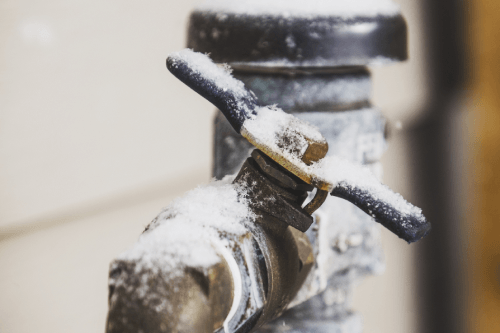Preventing Frozen Pipes in Cold Weather: Expert Advice
Preventing Frozen Pipes in Cold Weather: Expert Advice
Blog Article
Are you currently searching for insight concerning Preventing and dealing with frozen pipes?

Cold weather can wreak havoc on your plumbing, particularly by freezing pipelines. Right here's how to stop it from occurring and what to do if it does.
Intro
As temperatures decline, the danger of icy pipelines increases, possibly leading to expensive repairs and water damage. Recognizing how to stop icy pipelines is essential for home owners in cold climates.
Comprehending Icy Pipelines
What causes pipes to freeze?
Pipelines ice up when revealed to temperature levels below 32 ° F (0 ° C) for prolonged periods. As water inside the pipes freezes, it broadens, putting pressure on the pipe wall surfaces and possibly creating them to break.
Threats and problems
Icy pipes can result in supply of water interruptions, residential property damages, and pricey fixings. Ruptured pipes can flooding homes and cause considerable architectural damages.
Signs of Frozen Piping
Determining frozen pipelines early can avoid them from rupturing.
How to identify icy pipes
Seek reduced water circulation from faucets, uncommon odors or sounds from pipes, and noticeable frost on exposed pipes.
Avoidance Tips
Protecting at risk pipes
Wrap pipelines in insulation sleeves or make use of heat tape to secure them from freezing temperature levels. Focus on pipes in unheated or external locations of the home.
Heating methods
Keep indoor areas properly heated up, particularly locations with pipes. Open up closet doors to permit cozy air to distribute around pipelines under sinks.
Shielding Exterior Pipes
Yard pipes and exterior taps
Separate and drain yard hose pipes prior to winter season. Mount frost-proof spigots or cover outside taps with insulated caps.
What to Do If Your Pipelines Freeze
Immediate actions to take
If you presume icy pipes, keep faucets open to eliminate stress as the ice melts. Utilize a hairdryer or towels taken in warm water to thaw pipelines slowly.
Long-Term Solutions
Structural changes
Think about rerouting pipes away from exterior wall surfaces or unheated locations. Add added insulation to attic rooms, cellars, and crawl spaces.
Upgrading insulation
Purchase premium insulation for pipelines, attic rooms, and walls. Proper insulation aids keep consistent temperature levels and decreases the threat of icy pipes.
Conclusion
Avoiding frozen pipelines calls for positive steps and quick feedbacks. By recognizing the causes, signs, and safety nets, house owners can shield their plumbing during winter.
5 Ways to Prevent Frozen Pipes
Drain Outdoor Faucets and Disconnect Hoses
First, close the shut-off valve that controls the flow of water in the pipe to your outdoor faucet. Then, head outside to disconnect and drain your hose and open the outdoor faucet to allow the water to completely drain out of the line. Turn off the faucet when done. Finally, head back to the shut-off valve and drain the remaining water inside the pipe into a bucket or container. Additionally, if you have a home irrigation system, you should consider hiring an expert to clear the system of water each year.
Insulate Pipes
One of the best and most cost-effective methods for preventing frozen water pipes is to wrap your pipes with insulation. This is especially important for areas in your home that aren’t exposed to heat, such as an attic. We suggest using foam sleeves, which can typically be found at your local hardware store.
Keep Heat Running at 65
Your pipes are located inside your walls, and the temperature there is much colder than the rest of the house. To prevent your pipes from freezing, The Insurance Information Institute suggests that you keep your home heated to at least 65 degrees, even when traveling. You may want to invest in smart devices that can keep an eye on the temperature in your home while you’re away.
Leave Water Dripping
Moving water — even a small trickle — can prevent ice from forming inside your pipes. When freezing temps are imminent, start a drip of water from all faucets that serve exposed pipes. Leaving a few faucets running will also help relieve pressure inside the pipes and help prevent a rupture if the water inside freezes.
Open Cupboard Doors
Warm your kitchen and bathroom pipes by opening cupboards and vanities. You should also leave your interior doors ajar to help warm air circulate evenly throughout your home.

I found that write up on Helpful Tips to Prevent Frozen Pipes this Winter when surfing around the internet. Do you know about another person who is enthusiastic about the subject? Please feel free to share it. We take joy in reading our article about Preventing and dealing with frozen pipes.
Visit My Website Report this page